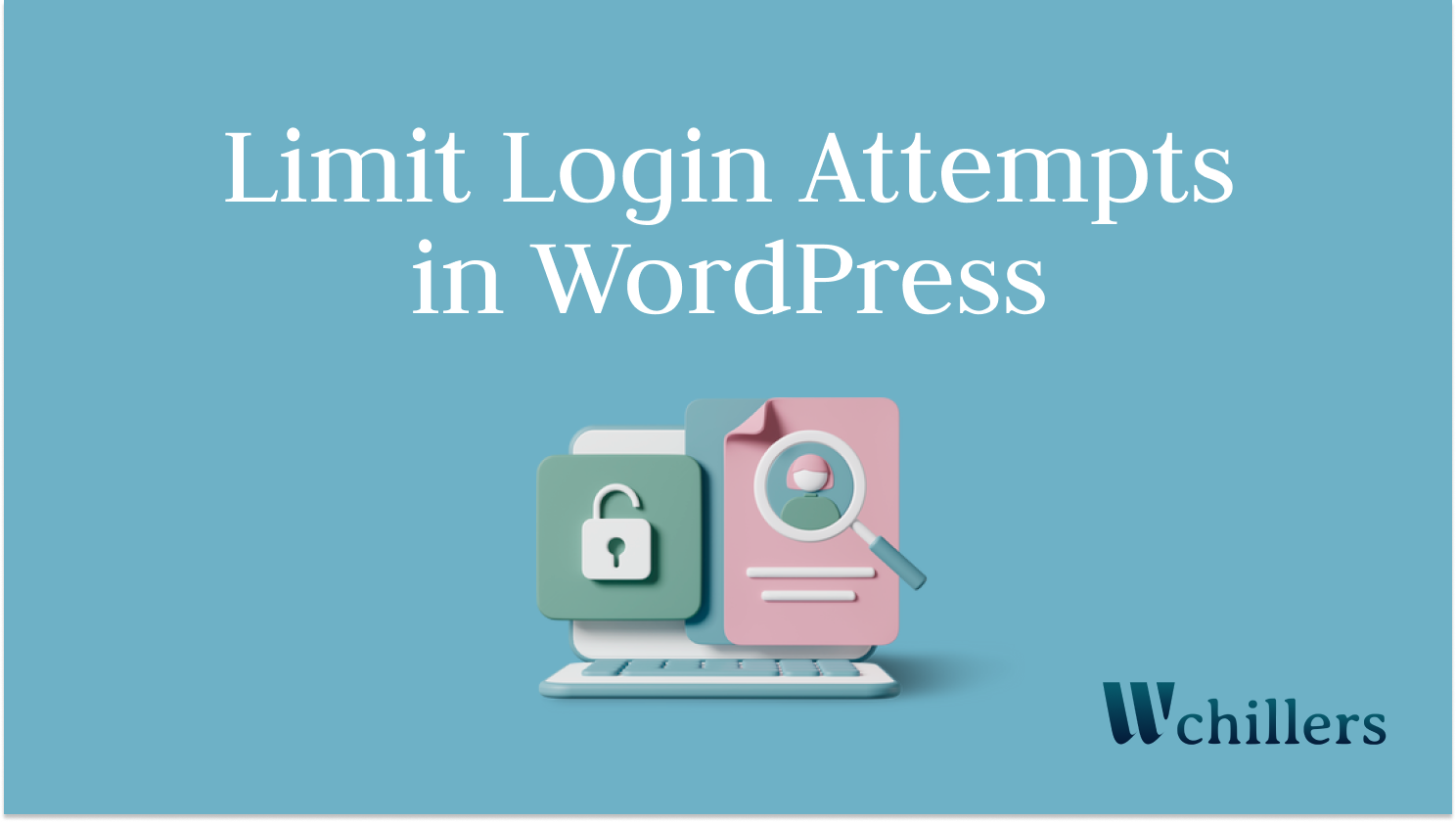Limit Login Attempts: Upturn WordPress Security 2024

Limit login attempts means limiting the number of attempts to log in to the WordPress admin panel in a limited period. This is to secure the site from humans or bot hackers trying to use various usernames or passwords to be successful in breaking in. When a user exceeds the number of login attempts, they will face a barrier of locking out or going through additional security measures like two-factor authentication or solving a CAPTCHA, to have access to try to log in again.
Let’s discuss the significance of limiting login attempts on your WordPress Website.
Table of Contents
Why limit login attempts
Limit login attempts are mainly used to prevent brute-force attacks on the website and to enhance the security of the site. A brute-force attack is a method that uses trial and error to hack into a website. The most common brute force attack is guessing the login information so that the hacker can get access to the site. As WordPress allows users to enter passwords as many times as they want, automated bots can get the chance to find the correct credentials to log in to the WordPress site. Limiting the login attempts restricts the chance of human or bot hackers getting to the login credentials by guessing and trying. Thus, it increases the security of the website.
How to limit WordPress login attempts
You’ll get number of methods to limit WordPress login attempts on your site. Let’s discuss:
Method 1: Using a WordPress plugin
There are dedicated plugins available specifically for limiting login attempts in WordPress. These plugins typically provide features such as customizable lockout durations, notification emails for failed login attempts, and the ability to whitelist trusted IP addresses.
Method 2: Using a security plugin
There are many security plugins that often come with features to limit login attempts, including options to set the maximum number of failed login attempts before locking out users, customizable lockout durations, and the ability to block IP addresses with excessive failed login attempts.
Method 3: Custom code
Login restriction can be done with custom code also. Here goes examples for both “limit login attempts” and “limit login attempts for failed hits” for your help:
// Function to limit login attempts
function limit_login_attempts($login, $username) {
// Maximum number of login attempts allowed
$login_attempts = 3;
// Lockout duration in seconds (e.g., 10 minutes)
$lockout_duration = 10 * MINUTE_IN_SECONDS;
$failed_login_count = get_option('_failed_login_count_'.$username, 0);
if ($failed_login_count >= $login_attempts) {
$lockout_time = (int) get_option('_lockout_time_'.$username, 0);
if ($lockout_time < time()) {
delete_option('_failed_login_count_'.$username);
delete_option('_lockout_time_'.$username);
} else {
$time_remaining = $lockout_time - time();
wp_die('Too many failed login attempts. Please try again after '.$time_remaining.' seconds.');
}
}
return $login;
}
add_filter('authenticate', 'limit_login_attempts', 30, 2);
// Function to handle failed login attempts
function failed_login_attempt($username) {
// Maximum number of login attempts allowed
$login_attempts = 3;
// Lockout duration in seconds (e.g., 10 minutes)
$lockout_duration = 10 * MINUTE_IN_SECONDS;
$failed_login_count = get_option('_failed_login_count_'.$username, 0);
$failed_login_count++;
update_option('_failed_login_count_'.$username, $failed_login_count);
if ($failed_login_count >= $login_attempts) {
update_option('_lockout_time_'.$username, time() + $lockout_duration);
}
}
add_action('wp_login_failed', 'failed_login_attempt', 10, 1);
Method 4: Using CAPTCHA
CAPTCHA helps to enhance security and can also be an option to limit login attempts. Popular options are Google reCAPTCHA and hCAPTCHA. CAPTCHA will detect failed login attempts and will place a challenge to differentiate the users from malicious bots.
Dos and Don’ts for WordPress Site Login Limit
Let’s be aware of the dos and don’ts for limiting login attempts on your site:
What to do
- Using a Security Plugin: Using a security plugin that includes login attempt limiting as a feature.
- Setting a Reasonable Limit: Setting a reasonable limit is essential. A common setting is 3 to 5 login attempts.
- Implementing Lockout Periods: After reaching the number of maximum attempts, lock out the IP address or the user account for a reasonable specific amount of time. For example, 15 minutes, 30 minutes, or more.
- Notifying Administrators: Configure the plugin to notify site administrators when lockout occurs, so they can investigate potential threats.
- Providing Exemptions: Allow exemptions for specific IP addresses or user roles to prevent legitimate users from accidental lockouts.
- Monitoring Logs: Monitoring the login attempts log regularly to detect any unusual activity or patterns that might indicate an attack.
- Providing Recovery Option: In case of forgetting passwords or exceeding login attempts, offering securing methods to recover, like email verification, security questions, or using CAPTCHA or reCAPTCHA.
What not to do
- Locking Out Indefinitely: Locking out indefinitely after a limited amount of failed logins should be avoided because legitimate users may face lockouts by accident.
- Relying Solely on IP-based monitoring: While blocking IP addresses after repeated failed attempts can deter attackers, it can also inadvertently block legitimate users sharing the same IP address, such as those behind a proxy server or within a large organization.
- Reveal too much information: Be cautious not to disclose whether the username or password was incorrect during failed login attempts. Simply, provide a generic error message to avoid giving attackers clues
- Neglecting Monitoring: Patterns of suspicious activity may emerge over time, requiring updates to your login attempt limitation strategy. So, neglecting monitoring should not be an option.
Significance of limiting login attempts on to your site
Limiting Login attempts is a security step to prevent sites from being attacked by hackers or malicious bots. By restricting the number of attempts, it becomes much more difficult for attackers to gain unauthorized access also attackers have fewer opportunities to use automated tools to test these credentials. It also helps to determine an attack early by showing a sudden increase in failed login attempts.
FAQs

Q: Why is limiting login attempts important?
Answer: Limiting login attempts helps prevent brute-force attacks.
Q: How does limiting login attempts work?
Answer: Limiting login attempts sets a maximum number of failed login attempts and restricts to trying again for a specific period of time.
Q: What are the benefits of limiting login attempts?
Answer: Limiting login attempts helps prevent unauthorized access to user accounts, enhances security, preserves server resources, improves the user experience by protecting against brute-force attacks, and enables early detection of potential security threats.
Q: How should I determine the threshold for limiting login attempts?
Answer: The threshold should strike a balance between security and user experience. It should be set at a level that effectively detects attackers while minimizing inconvenience for legitimate users.
Q: What happens if a legitimate user exceeds the login attempt limit?
Answer: If a legitimate user exceeds the login attempts limit, he/she may face a temporary lockdown, CAPTCHA challenges, email verification, or 2-factor authentication.
Q: How often should I review and update login attempt limits?
Answer: It’s important to regularly review and update login attempt limits based on evolving security threats, user feedback, and changes in user behavior patterns. Regular monitoring and adjustment ensure that the security measures remain effective without unduly impacting the user experience.
Last words
Limiting login attempts is an essential and recommended precaution to protect a WordPress website even in multisites. Keeping the WordPress site login limit in control upturns your site security. It is essential to balance security with user convenience, the benefits of preventing unauthorized access and protecting against potential breaches far outweigh the minor inconveniences users may face. Overall, limiting login attempts is a fundamental component of a comprehensive cybersecurity strategy, crucial for protecting digital assets in today’s increasingly connected world.